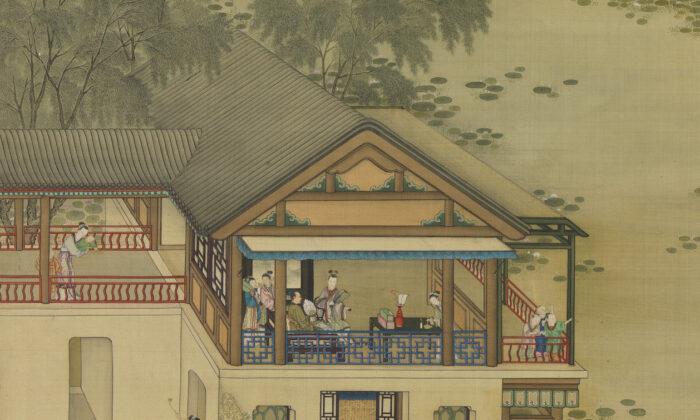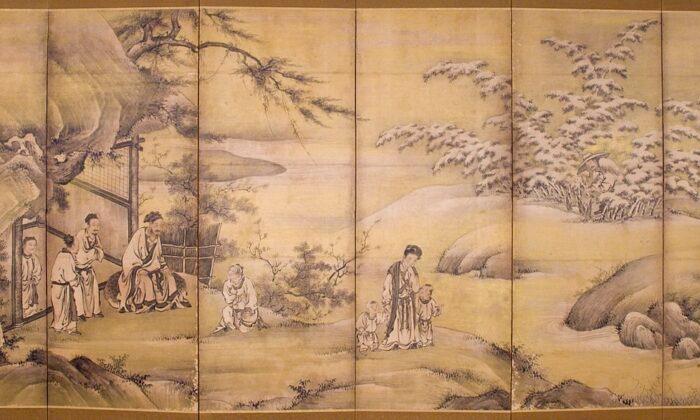Nov. 11 observes the 90th anniversary of the end of World War I, and the valiant role Canada played in the “War to End All Wars” is on the minds of many Canadians.
Renie Gross remembers how her father, Michael Dunne, a soldier in WWI, barely talked about his experiences in a war that brought human suffering to a level the world had not seen before.
It was partly old-fashioned chivalry toward her and her four sisters, she said, but also “the characteristic of many soldiers returning from the First World War.”
“The conditions were so terrible that they didn’t talk a lot about it, and no one really wanted to know about it. The sort of sense was this surge of patriotism that was experienced by the whole country, [but] in fact they had been sent to a terrible theatre of war, into a terrible war of attrition with no clear winners and losers most of the time,” said Mrs. Gross, a resident of Edmonton.
It was not until decades later, very near the end of his life, that Mr. Dunne began telling his war stories to his teenage grandson, Paul Gross. His experiences greatly affected Paul, who made it his lifelong dream to make a movie about this significant period in Canadian history.
He brought his dream to reality in “Passchendaele,” an epic film that tells of a soldier’s love story set against home-front activities in Calgary, and the horrors of trench warfare in the Battle of Passchendaele in Belgium in the fall of 1917.
The movie’s opening scene is based on a story Mr. Dunne told his grandson: At the Battle of Vimy Ridge he had killed a young German soldier by bayoneting him in the forehead.
Like many young Canadians at the time, Mr. Dunne enlisted when he was only 18, following in the footsteps of his two older brothers. Shortly after arriving in France in June 1916, he went to see his second oldest brother, Jim, who was stationed nearby. But Jim had been killed in a battle the day before.
Mr. Dunne himself was reported either wounded or missing in action on several occasions during the war, as was his oldest brother, Tom. The impact on his mother, Annie Dunne, was grave.
Mrs. Gross recalled how one of her uncles described Annie’s reaction whenever she would see the boy from the telegraph office coming to their home in Brooks, Alberta.
“He said she would immediately begin to tremble, because it was almost never good news. … She particularly suffered greatly from the uncertainties of the times, and in fact she didn’t live long enough to see my father after he got home from the war. She died in the summer of 1918 and he didn’t get home until December,” she said.
“My younger uncle always said she died of a broken heart.”
Achievements and Sacrifices

Mr. Dunne was one of over 620,000 Canadians who enlisted for military service in the war. About 424,000 served overseas as part of the Canadian Expeditionary Force. Canada’s population at the time was about 8 million.
The force’s main combat component was the Canadian Corps of four divisions that fought from 1915 to 1918 on the Western Front, along a 1,000-kilometre stretch of trenches extending from the northern edge of Switzerland to the English Channel along the German-Belgian-French border.
“It became one of the elite corps in the British Expeditionary Force and played a disproportionately successful role, especially in the last hundred days of the war when the Canadian Corps was simply extraordinary in its success,” said historian Jack Granatstein, a former director of the Canadian War Museum.
In April 1917, all four divisions fought together for the first time at the key German stronghold at Vimy Ridge. While previous attempts by French and British troops had failed to capture the ridge after suffering over 150,000 casualties, the Canadians succeeded. As Canada’s first major victory in the war, it became a symbol of Canada’s identity as an independent nation.
Canadian soldiers were so fierce and unrelenting in battle that their German opponents nicknamed them stormtroopers. But along with the glories came devastating losses.
“There was of course a huge price for this—more than 60,000 dead, 172,000 wounded, billions of dollars spent, political strife at home,” Mr. Granatstein said.
Tens of thousands of soldiers were permanently disabled. In particular, soldiers who suffered the severe mental trauma of “shell shock” were called cowards or seen as faking their illness.
Meanwhile, the war cost so much that “the country was very close to bankruptcy and could not afford very generous benefits,” said historian Desmond Morton, Emeritus Professor at McGill University.
The soldiers’ wives, sisters, and many other women were especially affected “tragically and disastrously,” he said.
Voluntary enlistment was sufficient for the first two years due to patriotic sentiment, outrage toward German aggression, and the romanticization of war. But the heavy casualties eventually weakened recruitment to the point where the Conservative government under Sir Robert Borden put conscription (a draft) in place.
This came about, however, only after fierce public debate that pitted Canadians against each other, most notably French-Canadians, who generally opposed conscription, against English speakers, who typically favoured it.
“I think Canadians were proud of what they had done [in the war] but thought the cost was enormous, and there was much division in Canada on whether what we had done was too much,” said Mr. Granatstein.
Paying Tribute
On this 90th anniversary, Canada’s National History Society is paying special tribute to the Canadian soldiers killed in WWI.
From sunset to sunrise over the nights of Nov. 4 to 11, the society’s “Vigil 1914-1918” will continuously project the names of the soldiers onto the National War Memorial in Ottawa as well as buildings in several other Canadian cities and in Trafalgar Square in London, England.
For its commemoration, the National Film Board of Canada has created a new film, “Front Lines,” by Claude Guilmain, which sheds light on the human face of war through letters written from the front by soldiers and a nurse.
The official launch of Veterans’ Week 2008, from Nov. 5 to 11, took place at a ceremony in the Senate Chamber on Parliament Hill on Nov. 6.
Janice Summerby, spokesperson for Veteran Affairs Canada, expressed gratitude to all veterans and their families. “We thank them for their participation, for preserving our values. We pledge to remember them and their sacrifice.”
Mrs. Gross believes it’s important to register all parts of one’s history, both the achievements and sacrifices, including “all of those things that are not good or not things to celebrate.”
“I think it’s still important that we know them and that we understand them, so I don’t think anything should be clouded over.”




